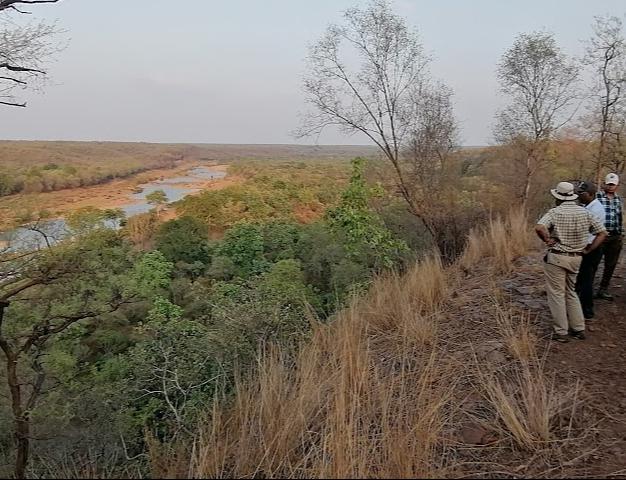Midst controversies ,concerns and cacophony of TV coverage, cheetahs reached Kuno national park. This fastest animal will remain confined within the four walls of a small enclosure before they are released in another – a bigger one about 5 sq kms. After spending almost two months in these enclosures, the animals are likely to be released in open - about 748 square km area Kuno National Park. Is there enough open grassland for cheetah to run , chase and kill, especially a prey like spotted deer. Cheetah ,in fact, is expected to “ adapt” the new conditions faster than its running speed and the park management has a challenge to “ minimize the damage.” Prime minister Narendra Modi while releasing the animal said, “ with cheetahs, the grassland ecosystem will be restored and biodiversity will increase”.
Cheetah's Chase & Space Crunch
Conservationists in India still believe that there is a space crunch for cheetahs in Kuno as compared to 15000 sq km and 20,000 sq kms and even bigger parks of Africa. "It is well established that even in the best of habitats (for example, the Serengeti-Mara ecosystem straddling Kenya and Tanzania), cheetahs exist in very low densities of around 1 per 100 sq km. Average female home ranges have been estimated to be about 750 sq km”, writes Ravi Chellam, senior scientist and CEO, Metastring Foundation & Coordinator, Biodiversity Collaborative. Given the size of Kuno, barely 10 cheetahs can be accommodated in Kuno. Many scientists in the prestigious Wildlife Institute of India (WII) believe that “there is hardly any space for the cheetah to go full throttle in Kuno . At a stretch, the animal can run hardly 2 kms”. A senior official at the Union ministry of environment, forest and climate change (MoEFC&C) said, “ Kuno is a shrubland and the cheetah will have to learn fast the art of negotiating the hurdles in the forms of scrubs in the stony ground of the jungle while chasing a prey.”
Also read: 7000 Cheetahs , 700 Lions: A Tale Of Misplaced Priority
Though the big cats are fast learners, let’s see how fast this fastest land animal learns the art”, they quipped. African experts also believe that " the cheetah adapts fast". A senior official said, “ we are apprehensive that Ziziphus nummularia growth may occur inside the cheetah enclosures. It is a shrub that may grow up to 6 metres or more to form a thicket”. many species were removd earlier but they re-grow." Scientists said that grasslands in Madhya Pradesh are termed as “cultural grasslands created after evacuating the villages”. Noted environmentalist Valmik Thapar in a TV interview said, “In Kuno, unless you convert woodland to grassland, it's a problem... quickly turning corners on stony ground, full of obstacles, it's a huge challenge (for the cheetahs)." "Can the government convert woodland to grassland? Does the law allow this," he asked.
Big Worries For The Big Cat
Once out from the enclosures in open , cheetah is going to be confronted with a sizeable population of leopards- remember how they were chased out from cheetah enclosures before the animal was translocated to Kuno- hyenas , jackals- a large number in Kuno- and also wolves , plenty in number. A senior officer said, “In African jungles cheetahs are not caught by larger predators like lions, leopards because it ( cheetah) runs faster in open spaces and this might not be possible in Kuno ''. Patches of grasslands which are available in Kuno have a different problem. These grasslands are on slopes, hillocks and ridges where grass species like Apluda and Themeda, comsidered unfriendly for cheetah grow. They grow as high as 6 feet and are not fit for a cheetah chasing a a prey. The spotted cat need grasses like Hetropogan but they are not available in larger areas.
Also read: Monsoon Magic of Kanha National Park Meadows
There is another concern-the food or the prey base. “Smaller animals like the blackbuck and chinkaras or the India gazelles are considered as the natural prey for cheetahs. “ But they are hard to find in Kuno . Like cheetahs, both live in the same habitat- the open grasslands. Because of their non -availability, cheetals or the spotted deer have been translocated”, said another official adding, “The cheetahs may hide inside the forest where it would be difficult for the cheetah to kill them.” African experts have said that the cheetahs are “ safer” in the fenced parks to prevent them from wandering outside. None of the jungles in India are fenced. “Cheetahs are known for walking long. Though all of them are fitted with satellite radio collars and would be monitored round the clock, they are still expected to reach the edge of the park.
Also read: Jungle Book Comes Alive in Pench Tiger Reserve
A state of the art monitoring system has been installed in Kuno to follow the animals and a team of cheetah mitras ( friends of cheetahs mainly villagers ) has been raised to protect them, safety of cheetah is still a cause of the concern. “The scientific foundation of the Action Plan to introduce African cheetahs in India is flawed. It also disregards our national conservation priorities and the rule of law as well as making exaggerated and unfeasible conservation claims. It will distract much-needed attention and resources from priority conservation issues and unfortunately end up as a very costly mistake”, CEO, Metastring Foundation & Coordinator, Biodiversity Collaborative.
Cover Pic from MoEFC&C tweet




Comments
Post a Comment